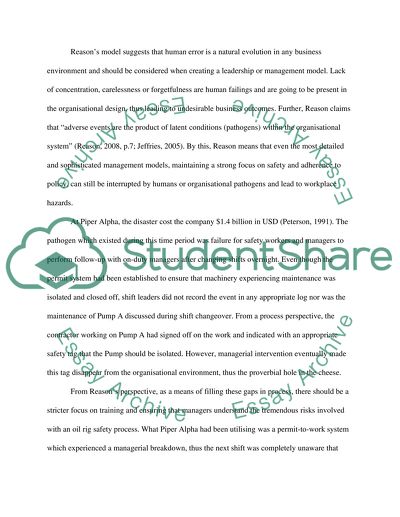Cite this document
(Piper Alpha Oil Rig Fire Assignment Example | Topics and Well Written Essays - 1750 words, n.d.)
Piper Alpha Oil Rig Fire Assignment Example | Topics and Well Written Essays - 1750 words. Retrieved from https://studentshare.org/sociology/1558229-crew-resource-management-report2000-words-using-the-model-designed-by-professor-james-reason-write-a-report-on-the
Piper Alpha Oil Rig Fire Assignment Example | Topics and Well Written Essays - 1750 words. Retrieved from https://studentshare.org/sociology/1558229-crew-resource-management-report2000-words-using-the-model-designed-by-professor-james-reason-write-a-report-on-the
(Piper Alpha Oil Rig Fire Assignment Example | Topics and Well Written Essays - 1750 Words)
Piper Alpha Oil Rig Fire Assignment Example | Topics and Well Written Essays - 1750 Words. https://studentshare.org/sociology/1558229-crew-resource-management-report2000-words-using-the-model-designed-by-professor-james-reason-write-a-report-on-the.
Piper Alpha Oil Rig Fire Assignment Example | Topics and Well Written Essays - 1750 Words. https://studentshare.org/sociology/1558229-crew-resource-management-report2000-words-using-the-model-designed-by-professor-james-reason-write-a-report-on-the.
“Piper Alpha Oil Rig Fire Assignment Example | Topics and Well Written Essays - 1750 Words”, n.d. https://studentshare.org/sociology/1558229-crew-resource-management-report2000-words-using-the-model-designed-by-professor-james-reason-write-a-report-on-the.


